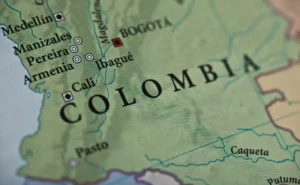(Analysis) Official figures reveal that Colombia’s economy in 2025 stands at a pivotal moment. The country registers real GDP growth of around 2.7%, with agricultural activity leading the way.
The National Administrative Department of Statistics (DANE) reports that the agricultural sector expanded by 7.1% in the first quarter, outpacing the rest of the economy.
Exports of agricultural products hit record highs, rising by 26.7% in value and over 10% in volume compared to the previous year. Coffee exports alone grew by nearly one-third, while other crops and livestock also posted substantial gains.
Despite a backdrop of global economic uncertainty, Colombia maintains forward momentum in its consumption-driven sectors. The services sector grows by over 4%, giving essential support to broader economic performance.
However, manufacturing and the industrial sector face a continued contraction, moderating the pace of overall expansion. Unemployment registers at approximately 9% in May, which is an improvement from the previous year, though still higher than pre-pandemic levels.

The labor market remains fragile, with informal jobs rising faster than stable formal employment, a trend that worries business and labor leaders alike.
Inflation, once a cause of deep concern, recedes to 4.8% in June. Analysts attribute the decline primarily to easing global supply pressures and lower food and energy prices, not just government action.
Colombia Holds Rates Amid Rising Fiscal Risk
The Banco de la República keeps its benchmark rate at 9.25%, showing caution in light of fiscal uncertainty and external risks. The interest rate remains well above regional averages, which impacts consumer credit costs.
Business leaders closely watch Colombia’s government debt, which approaches 63% of GDP in July, rising sharply in the past two years. The fiscal deficit stands at 7.1% of GDP, with forecasts showing continuing strain into 2026.
The Minister of Finance acknowledges that the government has paused its fiscal rule for up to three years, allowing for higher spending to meet growing social and infrastructure commitments.
While this policy offers short-term relief, international ratings agencies warn of longer-term sustainability risks if no credible consolidation plan is implemented.
Colombia’s robust agricultural expansion offers genuine opportunity. Yet other sectors, such as industry and mining, show stagnation or contraction.
The country’s export base remains narrow, heightening exposure to price shocks. Tourism revenues begin to surp*** those from coal, but experts note the lack of a cohesive strategy to maximize this sector’s growth.
Economic momentum persists into the second half of 2025, but sharp fiscal risks create significant uncertainty. Businesses and investors see opportunity but remain wary of deficit and debt projections.
Colombia’s story this year is one of clear progress checked by real, unresolved fiscal challenges. The country’s ability to transition from agricultural strength to a broader-based, durable growth path will shape its outlook for years to come.
Source link
https://findsuperdeals.shop/


